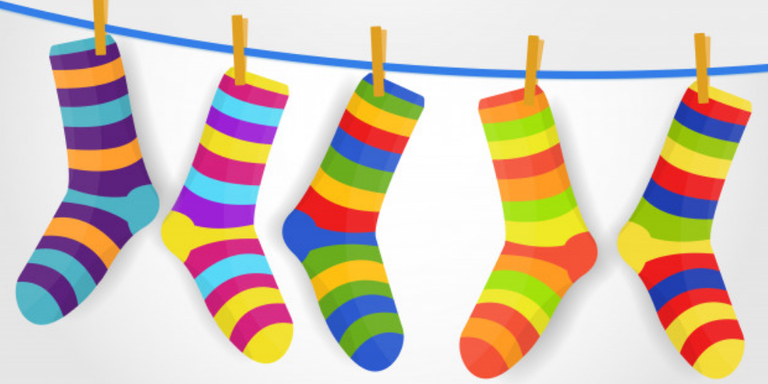

Hoy les comentaré sobre una condición bastante frecuente y particular: Síndrome de Down.

A cordial greeting to the entire community, a pleasure to greet you, here is your server: @galejandrovv.
Today I will tell you about a quite frequent and particular condition: Down Syndrome.

UN POCO DE CULTURA GENERAL
A BIT OF GENERAL CULTURE
Estos 22 pares de cromosomas autosómicos se ordenan de manera decreciente en cuanto al tamaño, es decir, desde el par más grande hasta el par más pequeño, y, el último par, es del de los cromosomas sexuales.
Como dato curioso, les comento: el sexo del individuo está condicionado única y exclusivamente por el padre, ya que, la mujer siempre aportará los cromosomas XX y el hombre aportará los cromosomas XY; por lo tanto, si el hombre aporta el cromosoma X, nacerá una niña, si por el contrario, aporta el cromosoma Y, nacerá un niño.
These 22 pairs of autosomal chromosomes are ordered in decreasing size, that is, from the largest pair to the smallest pair, and the last pair is that of the sex chromosomes.
As a curious fact, I tell you: the sex of the individual is conditioned solely and exclusively by the father, since the woman will always contribute the XX chromosomes and the man will contribute the XY chromosomes; therefore, if the man contributes the X chromosome, a girl will be born, if on the contrary, he contributes the Y chromosome, a boy will be born.

Fuente / Source

¿QUÉ ES EL SÍNDROME DE DOWN?
¿WHAT IS DOWN SYNDROME?
El Síndrome de Down fue la primera alteración cromosómica hallada en las personas, descrita en el año 1866 por el Dr. John Langdon Haydon Down, para ese entonces, solamente fueron descritas las características clínicas que presentaban en común las personas con dicho síndrome; no fue si no hasta el año 1958 que el genetista Jérôme Lejeune descubrió que se trataba de una alteración genética del par de cromosomas 21.
La incidencia de éste Síndrome es de 1 por cada 1000 nacidos vivos, es decir, es una condición bastante frecuente, de hecho, es la principal causa de discapacidad intelectual y la alteración genética humana más común.
Éste Síndrome se produce de manera espontánea, no hay alguna causa descrita; pero, lo que sí aumenta el riesgo de aparición es la edad materna avanzada, aquellas mujeres con edad mayor de 35 años, tienen una alta probabilidad de traer al mundo a una persona con Síndrome de Down.
Down Syndrome was the first chromosomal alteration found in people, described in 1866 by Dr. John Langdon Haydon Down. At that time, only the clinical characteristics that people with this syndrome had in common were described; It was not until 1958 that the geneticist Jérôme Lejeune discovered that it was a genetic alteration of chromosome pair 21.
The incidence of this Syndrome is 1 per 1000 live births, that is, it is a fairly frequent condition, in fact, it is the main cause of intellectual disability and the most common human genetic alteration.
This Syndrome occurs spontaneously, there is no described cause; but, what does increase the risk of appearance is advanced maternal age, those women over 35 years of age have a high probability of bringing a person with Down Syndrome into the world.

Fuente / Source

CARACTERÍSTICAS CLÍNICAS DEL SÍNDROME DE DOWN
CLINICAL FEATURES OF DOWN SYNDROME
Además, estas personas suelen cursar con otras alteraciones, sobre todo las alteraciones a nivel cardiovascular, también suelen cursar con obesidad, obstrucción intestinal, apnea del sueño, demencia, etc.
In addition, these people usually have other alterations, especially alterations at the cardiovascular level, they also usually have obesity, intestinal obstruction, sleep apnea, dementia, etc.

Fuente / Source

21 DE MARZO: DÍA MUNDIAL DEL SÍNDROME DE DOWN
MARCH 21: WORLD DOWN SYNDROME DAY
Éste día es muy habitual ver a muchas personas usando calcetines largos y de colores diferentes, esto en apoyo a las personas que padecen dicha condición y para crear conciencia al respecto.
Estas personas merecen inclusión, son personas muy amorosas y colaboradoras, es fácil enamorarse de ellas.
This day it is very common to see many people wearing long socks of different colors, this in support of people who suffer from this condition and to raise awareness about it.
These people deserve inclusion, they are very loving and collaborative people, it is easy to fall in love with them.

Fuente / Source

Fuente / Source


Texto traducido en XTranslate
Separadores creados en Gravit Designer
Vectores descargados de Flaticon
Banner's creados en Canva
Translated text with the extension XTranslate
Separators created in Gravit Designer
Vectors downloaded from Flaticon
Banner's created in Canva

PRIMUM NON NOCERE









The rewards earned on this comment will go directly to the person sharing the post on Twitter as long as they are registered with @poshtoken. Sign up at https://hiveposh.com.
Su post ha sido valorado por @ramonycajal
Congratulations @galejandrovv! You have completed the following achievement on the Hive blockchain and have been rewarded with new badge(s):
Your next target is to reach 1500 upvotes.
You can view your badges on your board and compare yourself to others in the Ranking
If you no longer want to receive notifications, reply to this comment with the word
STOPCheck out the last post from @hivebuzz:
Support the HiveBuzz project. Vote for our proposal!